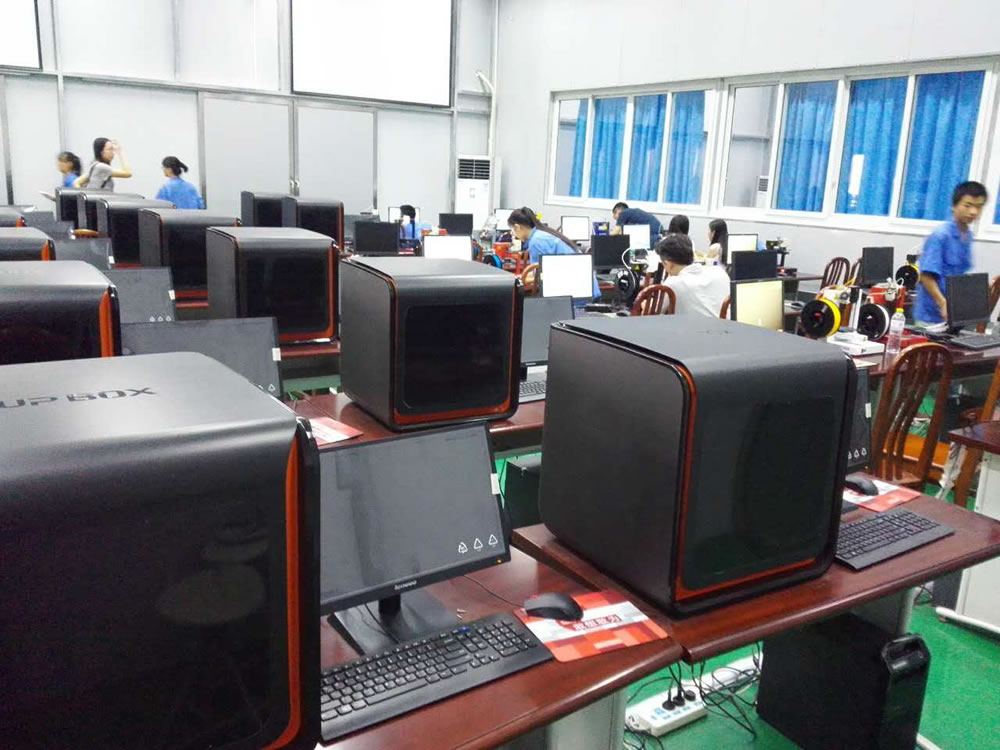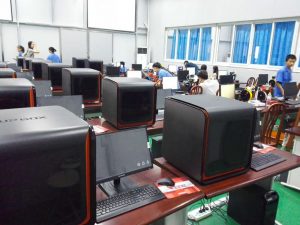Sichuan University is one of the key national universities directly under the Ministry of Education in China. It is also one of the “985” and “211” engineering colleges. It is where masters with strong scientific research backgrounds gather together to innovate and create. With the support of the World Bank loan project, Sichuan University Engineering Training National Experimental Teaching Demonstration Center has pioneered the instruction of rapid prototyping practices. During the past 20 years, the Engineering Training Center has built up an RP and 3D printing learning platform for other domestic engineering training centers. It involves a large number of equipment types, significant student benefits, and a high academic level. With strong support from the school, a number of experimental projects have been domestically realized.
The platform provides 3D printing basic training, 3D printing synthesis and professional training, rapid parts manufacturing at multiple levels, a variety of technological experiment teaching modules, and the Internet plus 3D printing technology integrated training system.
In early 1999, the Demonstration Center began to purchase 3D printers. The first batch of machines selected was from Tiertime’s line, mainly for research needs. An excellent product experience laid a solid foundation for long-term cooperation. To date, the Engineering Training Center has purchased over 30 Tiertime UP BOX, 30 UP Plus 2, eight industrial-grade 3D printers and two SLA 3D printers.
The main purpose of the Rapid Prototyping course is to introduce students to the cutting-edge technology of 3D printing and develop students’ critical thinking and hands-on skill by providing the opportunity to get started. The primary machines used are desktop models, for basic training mainly open to undergraduates. They benefit about 4,000 students a year in different majors. For graduate students, Ph.D. students and senior undergraduate students, there are professional experiments and entrepreneurship training. This includes the design and production of creative works, cultural relics and model making, human medical model production and more. The 3D printers are also used for comprehensive subject training as well as different types of disciplines, plus national and provincial competition production.
Since introducing Mei Xiaoqin as Sichuan University Associate Professor of Manufacturing Science and Engineering, the Rapid Prototyping course’s elective rate has been more than 50%, an impressive metric compared to other electives.
Professor Mei said, “We are very fond of Tiertime products. They are reasonably priced and exhibit good stability. The brand offers quality materials and after-sale support, making Tiertime very suitable for our teaching needs.”
To enable more students to access and learn about 3D printing, “Rapid Prototyping Technology” is open to all students. Individuals in other departments can sign up for the course. The college’s 3D printing laboratory is also open to the entire school, regardless of academic major. Anyone with scientific research needs can use the machines.
Professor Liu Shengqing of the Sichuan University Group of Experts and a member of the Steering Committee for the Ministry of Metalworking Education believes Tiertime has played an important role in the creation of a first-class engineering training center. “Compared with other similar equipment in the school, Tiertime equipment provides an advantage in speed, stratification, and accuracy. The repair rate is low, the interface easy for students to grasp. We can contact Tiertime’s service center any time we need help. The company seriously listens to our comments, which is not common among domestic competitors,” said Liu.
Professor Mei speaks of 3D printing’s recent rise in popularity. “The demand for 3D printing has increased in the past two years. Sichuan Province’s funding support for scientific research involving 3D printing crosses over to military and civilian enterprises. Businesses are transforming their technology roadmap. ”
Professor Mei cited two cases of cooperation between education and business. First, the promotion of 3D printing in the field of medicine has catalyzed the joint efforts between Sichuan University, Huaxi Medical University, and Sichuan Military Hospital. These top hospitals have started to apply 3D printing to some clinical cases, achieving medical breakthroughs.
Another case of school-enterprise cooperation is reflected in the rapid development of the local oil industry in Sichuan. Although Sichuan’s petroleum equipment is in a leading position in China, an oil drill can cost hundreds of thousands to millions of dollars, and its research and development expenditure is quite high. The School of Manufacturing Science and Engineering, Sichuan University, uses Tiertime 3D printers to solve a lot of problems in drill bit technology.
“Students are very fond of the Rapid Prototyping Technology course. After graduation, many apply it either in employment or as an application bright spot. I now have two students in the United States involved in 3D printing research,” said Mei.
Compared with traditional training methods, Sichuan University School of Manufacturing Science and Engineering takes full advantage of the teaching resources of 3D printing and actively creates teaching and business cooperation opportunities for students. The goal is to provide businesses with graduates who have practical abilities applicable to the personnel requirements of local industry.
With the growing 3D printing market, the increasing demand for 3D printing, and the shortage of 3D printing talent, this innovative training model of school-enterprise cooperation is in line with the direction of China’s education reform. Tiertime will spare no effort to support the promotion of Sichuan University’s methods to improve education and to nurture creative talent.



